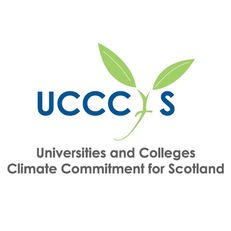This report is based on the sector submissions to HESA Estates Management Records as well as Public Bodies Climate Change Duties Reporting which were voluntary submitted in November 2015 covering 2014-15 carbon emissions data.
EAUC-Scotland have worked together with consultant Claire Wharmby from Carbon Forecast to investigate the overall emissions of the Scottish Further and Higher education sector looking at emissions and sector trends, as well as recommendations on how improvements can be made in line with national carbon reduction targets.
In 2014-15 the Scottish FHE sector produced around 480,000 tCO2e as a result of its operations. The majority of these emissions came from Scope 1 and 2 sources and were related to energy use in buildings; the two key sources being natural gas and grid electricity. Business travel was also a major contributor to this emission total, which represents a consistent current trend with an increase in cheaper domestic air travel. This total does not include additional Scope 3 emissions such as student and staff commuting and procurement of goods and services, which have previously been difficult to track.
Overall emissions in the HE sector within Scotland have increased over the past 7 years, from 316 MtCO2e in 2007/08 to 384 Mt in 2014/15. Reasons for this increase may include ‘boundary creep’ with increased visibility of emissions from business travel and more generally increased provision of data. If business travel is removed from the calculation, emissions have still increased by 6% between 2008/09 and 2014/15. However, it is worth noting that when the HE data is examined in respect to the increasing income that there is an overall decrease in emissions which shows efficiencies in the universities.
Although only 12 out of the potential 26 FE organisations reported in the pilot year, there was still sufficient data to draw some positive conclusions from the FE sector too, such as a lower proportion of Scope 3 emissions. This is likely to be due to lower levels of business air mileage. The organisations that did report also took a reasonably consistent approach to organisational and operational boundary setting - a key area recommended for other institutions going forward to align data sets to allow effective interpretation and analysis of the sector as a whole.
The Key Findings report can be found to download on the right hand side.
If you would like to read the full report, please contact us at [email protected]





 Except where otherwise stated, content on this site is
licensed under a Creative Commons Attribution 3.0 License.
Except where otherwise stated, content on this site is
licensed under a Creative Commons Attribution 3.0 License.
